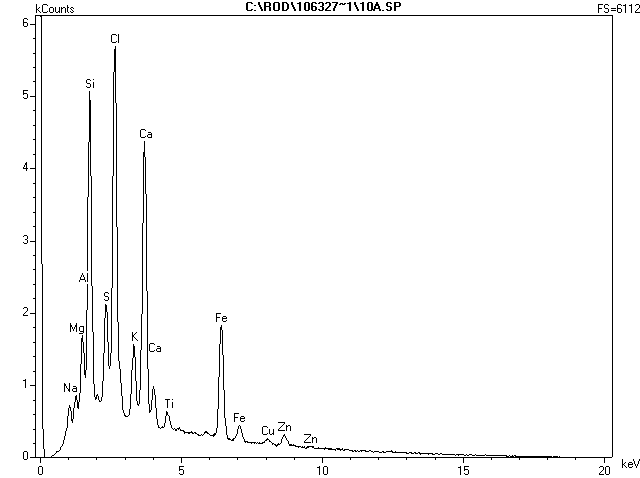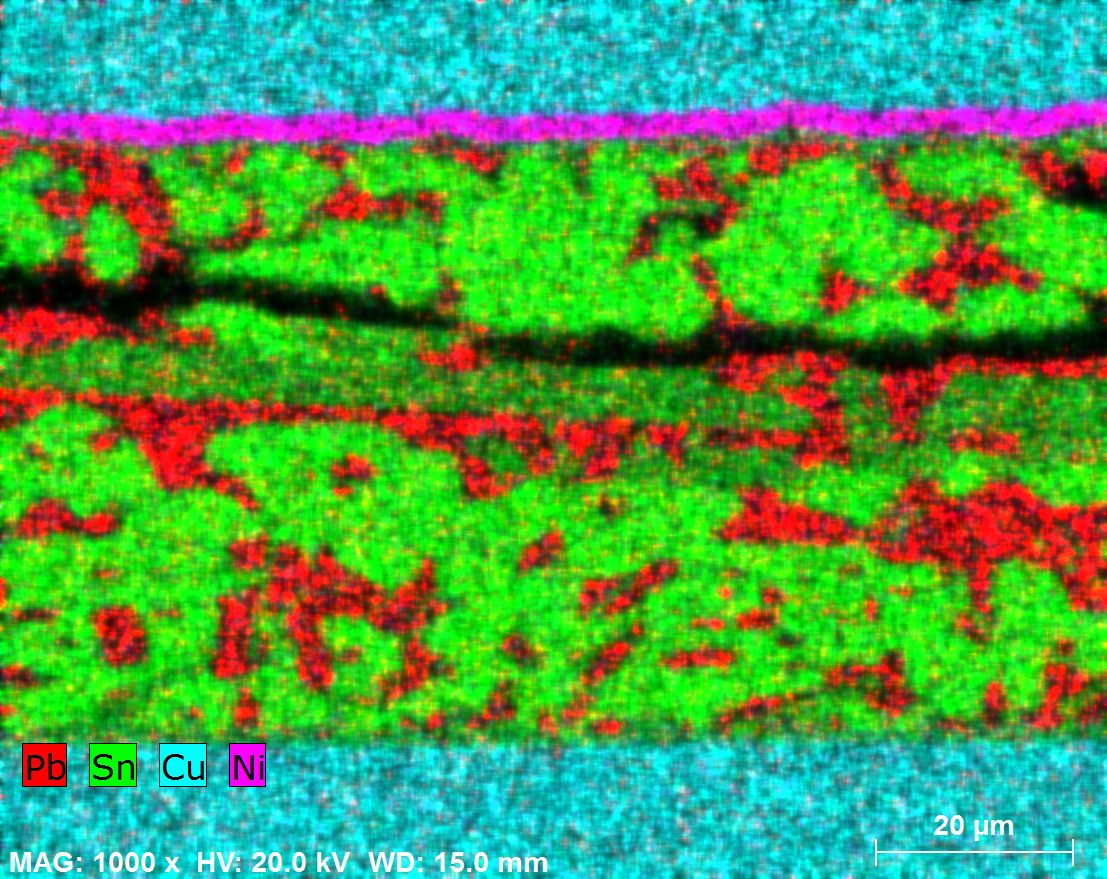Energy Dispersive X-ray (EDX)
SEM-EDX involves the use of a scanning electron microscope. The interaction of the electron beam with the sample causes the emission of x-rays, whether or not a detector is present to capture and analyze them. In SEM-EDX the interaction region from which the x-rays are emitted is in the range of 1μm³. Although much smaller regions can be resolved in SEM imaging, the x-rays detected are of several thin layers or regions within the specimen. The x-ray photons are analyzed spectroscopically to obtain elemental information about the specimen. Elements B to U can be detected using a windowless EDX detector.
EDX (EDS) is a method of spectroscopy that is useful in identifying the composing elements of materials. EDX does not reveal chemical bonding information. For example, if Si and W are detected, one cannot tell by EDX alone whether the sample consists of W metal on Si or is WSi2, or contains all three materials. Hence EDX is more suited for the analysis of inorganic materials, rather than organic materials, which contain for the most part all the same elements bonded differently.

Sample EDX Spectrum

EDX map of failed solder joint
Typical applications:
Structure studies of thin films
Analysis of grains, precipitates or particulates
DPA studies
Reverse engineering
Contamination analysis
Failure analysis
Identification of metal particles in motor oil
